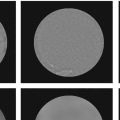When it comes to managing data in a MySQL database, there are two main commands that can be used to delete data: TRUNCATE and DELETE. Both of these commands have their own advantages and disadvantages, and it is important to understand the differences between them in order to make the best decision for your database. TRUNCATE is a data definition language (DDL) command that removes all rows from a table quickly. It is similar to a DELETE statement without a WHERE clause, and is much faster than deleting rows one by one.
However, TRUNCATE transactions can be undone in some database engines such as SQL Server and PostgreSQL, but not in MySQL and Oracle. Additionally, TRUNCATE cannot follow cascading deletions for foreign key relationships, so it is important to be aware of this limitation when using this command. The DELETE command is slower than the TRUNCATE command, but it does allow for more control over which rows are deleted. It also allows for the use of WHERE clauses to specify which rows should be deleted, and it can follow cascading deletions for foreign key relationships.
However, because DELETE creates an entry for each deletion in the transaction log, it can be slower than TRUNCATE when deleting large amounts of data. When deciding which command to use, it is important to consider the specific needs of your database. If you need to delete large amounts of data quickly, then TRUNCATE may be the best option. However, if you need more control over which rows are deleted or if you need to follow cascading deletions for foreign key relationships, then DELETE may be the better choice.











